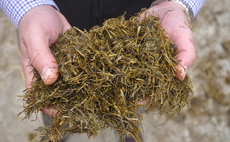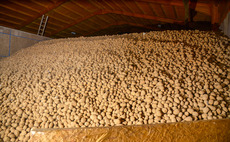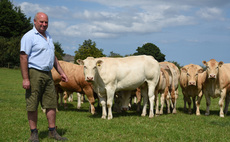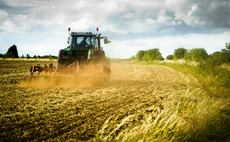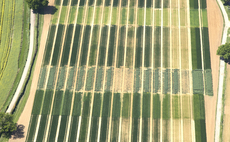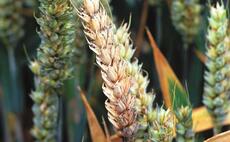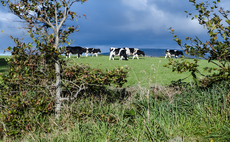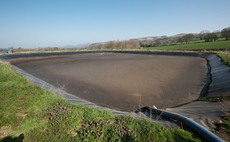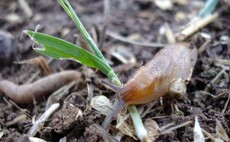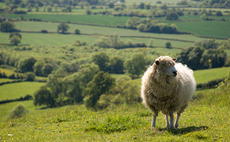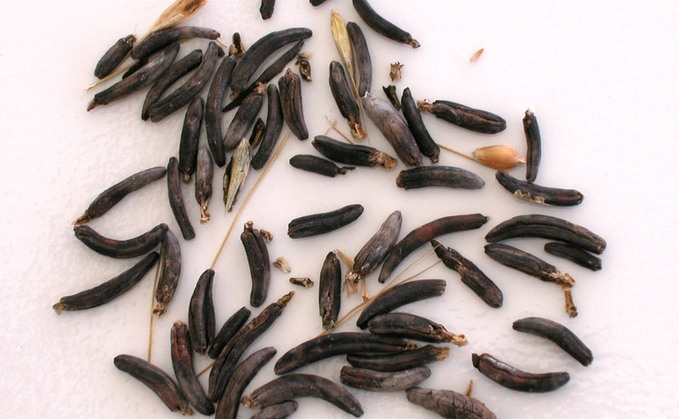
A change in regulation for the wheat contaminant ergot will affect how millers treat incidences of the disease going forward. But with careful crop management, there are a number of steps which can be taken on-farm to reduce the risk of rejection.
Despite some uncertainty surrounding which weather most favours the development of ergot, it still remains the main risk factor associated with the disease.
Most scientists support the idea wet weather at flowering typically favours the disease, Joe Brennan, policy and research officer for the National Association of British and Irish Flour Millers (nabim), told the AHDB Milling Wheat conference.
"Some believe a cold winter followed by warm, wet weather could also be a risk factor," he said.
"Spring cereal varieties are thought to be at more risk of the disease, but there does not appear to be significant varietal differences in the UK in terms of resistance."
Management
Although there is no silver bullet chemistry to tackle ergot in the field and no varieties with resistance, there are a number of cultural steps growers can take to minimise the risk of infection.
Grass-weeds such as ryegrass and black-grass are significant ergot hosts, producing sclerotia which will contaminate the main crop.
Mr Brennan said: "Management of grass-weeds is key. Sowing uninfected [cereals] seed is also quite important. If it's free from sclerotia and you're not introducing more inoculum into the soil, you're decreasing the risk of future infection."
Late flowering grass margins will also reduce the inoculum which goes on to infect the main crop because there will not be ergot infections occurring at the same time as when the main crop is flowering, he added.
"Ergot cannot germinate at depth, so plough to at least 5cm so ergot sclerotia won't remain viable. Of course, this will depend on your farm set-up."
Regulation
Changes to regulation expected to apply from July 2021 will see the current limit for ergot sclerotia in cereals go from 0.05% to 0.02% per tonne of wheat.
Although many UK mills already operate with a lower tolerance to ergot, growers should expect more mills to operate to a stricter tolerance when the new limits are introduced, Mr Brennan said.
"Ãļ§Ö±²¥ need to start considering ergot as a serious compliance issue akin to other mycotoxins and food safety implications.
"Even at 0.02% ergot sclerotia, the alkaloid content of that grain would be at 400 parts per billion. That's too high to ensure it abides by processed product maximum levels, which are 100ppb.
"An average wheat sclerotia of average size and average weight contains about 1.8 million ppb of ergot alkaloids. When you compare that with the limit for white flour, you'll see there's an enormous disparity there."
If grain is contaminated it should be cleaned before delivery to a mill, otherwise there is a high risk of rejection, Mr Brennan said.
"It's important to know that handling grain which contains sclerotia without cleaning it increases the general ergot alkaloid content of that grain. This is because as the sclerotia fragment and spread out, the smaller pieces increase ergot alkaloid concentration in that bulk."
Cleaning the grain as early as possible is key to reducing sclerotia breakage and minimising contamination, he added.
Testing
When it comes to testing for alkaloids, the presence of ergot sclerotia is the best indicator, said Mr Brennan.
"The mycotoxins are present in the sclerotia at very high concentration, so if sclerotia are present, that grain is effectively contaminated.
"There's a rapid test available for ergot alkaloids, but with ergot you're looking to see sclerotia which are pretty visibly distinct from grain, and that does a better job than testing a small portion of that bulk."
It is important growers understand tolerances in their local market, and if ergot sclerotia contamination is found, they should consider the tolerances of the mills they usually supply, Mr Brennan said.
What is ergot?
Ergot is a fungal disease which affects wheat, barley, oats, rye, triticale and a wide range of grasses, particularly black-grass.
Spores infect the floret of flowering cereals or grasses, with visible symptoms appearing as a sap-like substance on the outside of the ear. This contains spores which will go on to infect more florets.
At the infection site, spikelets are replaced by ergot sclerotia, a dark purple/black elongated grain-like structure which contains the dormant fungi. These fall off the ear and into soil where it can lay dormant for up to a year.
Under the right conditions it will germinate and release spores.
Ergot has little effect on crop yields but the ergot alkaloids which are produced may have harmful effects on humans and animals.
Source: nabim
Key points:
- Wet weather at flowering is thought to put crops at higher risk
- Spring varieties are more vulnerable
- Grass-weeds are significant hosts of ergot
- Burying the pathogen below 5cm will prevent germination
- Contaminated grain should be cleaned as early as possible before going to the mill
- The presence of ergot sclerotia is the best indicator of alkaloids
- Understand the tolerances of your local mill and any changes to ergot regulations
Source: nabim






